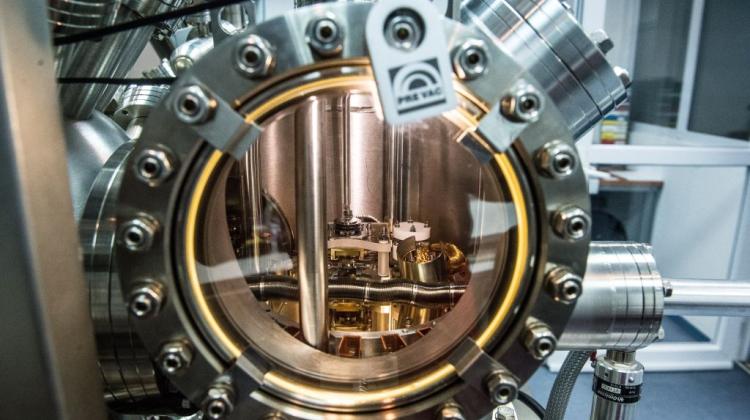Castle in Rozprza is ... half a millennium younger
Remains of the castle in Rozprza (Łódź province) come from the end of the 10th century at the earliest, and are almost half a millennium younger than previously thought. "A similar problem can affect many fortified settlements in Poland, studied on a large scale in the 1960s as part of the so-called Millennium Research" - told PAP Dr. Jerzy Sikora from the Institute of Archaeology, University of Lodz.
From the late 1940s to the 1960s large scale Millennium Research project was carried out in Poland, the objective of which was to identify the major centres of the Piast reign. Archaeologists obtained a lot of data about the history of the Polish state in the initial phases of its existence.
"Recent studies often show that the previous findings were wrong due to the imperfections of contemporary research methods" - noted Dr. Sikora. Archaeologist pointed to the problems of dating the discovered remains, such as embankments or settlements. Modern technology allows to create better documentation, for fuller surveys, and above all more accurate determination of chronology, through the use of dendrochronological and radiocarbon methods. "Our research is much more precise than was possible a half-century ago" - added the researcher.
Currently researchers are able to determine the age of some of the monuments with almost a year accuracy. This was the case with some wooden castle structures discovered in Rozprza.
Until now it was thought that the stronghold was small, with the internal diameter of just 18 m. Researchers believed that it was surrounded by small, non-fortified settlements, situated on the low hills at the bottom of the Luciąża river valley.
Analysis of aerial photographs taken in 2013, 2015 and 2016 and the results of geophysical surveys allowed to modify the image. It turned out that south of the outer embankment was a borough separated with additional moat. There could be even an additional horse-shoe embankment (later levelled to the surface of the surrounding ground) surrounding the borough. Small settlements, the existence of which the millennium period researchers suspected, proved to be part of the borough.
According to the latest concepts, the functioning of the stronghold can be divided into two main phases - earlier, when it was not as powerful (from the end of the 10th or the beginning of the 11th century) - and later (from the 14th century), with a larger borough, centrally-located cone-shaped mound that probably was the base for a wooden tower - residence and surrounding moat - it measured over 20 meters in width!
With this year\'s excavations also revealed the extraordinary method of elevating embankments of the oldest castle. Usually soil and wood were used in this type of structures. In this case, the outer side of the embankment was covered with turf cubes.
"The closest resemblance to such a solution can be found in the Labe region and on the Labe - Saxon border. However, we believe that this was not a borrowed solution - builders simply used the material that was available and it served its function" - explained Dr. Sikora. Usually embankments were finished with clay or stone. However, these raw materials apparently could not be found in sufficient quantities near the settlement.
During the excavations the archaeologists stumbled upon several surprises. "The basic principle in archaeology is, older layers are lower. Meanwhile, during the excavations within the moat we discovered older monuments in the higher layers!" - said Dr. Sikora. The solution of this puzzle turned out to be the activities of the last owner of the settlement. In 1944, he levelled half of the monument to the ground, filling the moat with material from high embankments. He obtained a flat meadow that could be used for his purposes. During these activities he disturbed the layers of monuments and reversed the order of their deposit.
According to written sources, Rozprza was one of the most important strongholds in the central Polish in the 12th century. It was the residence of a princely administration official, and in the 13th century, the stronghold had the status of the seat of the Castellan. The first mention of the settlement comes from the 11th century.
This year, researchers also discovered an unknown page of the history of Rozprza - piles driven into the area of the castle. It has been determined that the wood comes from 1576 - from the time in which the town no longer existed, and was only an elevation in the area. Perhaps the historic castle was being prepared for defensive functions in connection with the unrest accompanying the election of Stefan Batory - archaeologists speculate.
An important aspect of the research is interdisciplinary collaboration of researchers of many disciplines - said Dr. Sikora. In addition to the archaeologists, involved specialists include geomorphologists, soil experts, dendrochronologists, experts specialising in plant macroremains, animal remains, including the remains of fossil beetles, lake flies larvae and snails, coming from both Polish and foreign centres. This allows to reconstruct not only traces of human activity, but also gain knowledge of the natural environment of the stronghold, and even climate change - the researchers argue. The Rozprza scientific program is headed by Dr. Piotr Kittel from the Department of Geomorphology and Palaeogeography, University of Lodz.
Research in Rozprza is financed by the National Science Centre.
PAP - Science and Scholarship in Poland
szz/ zan/
tr. RL
Przed dodaniem komentarza prosimy o zapoznanie z Regulaminem forum serwisu Nauka w Polsce.


















